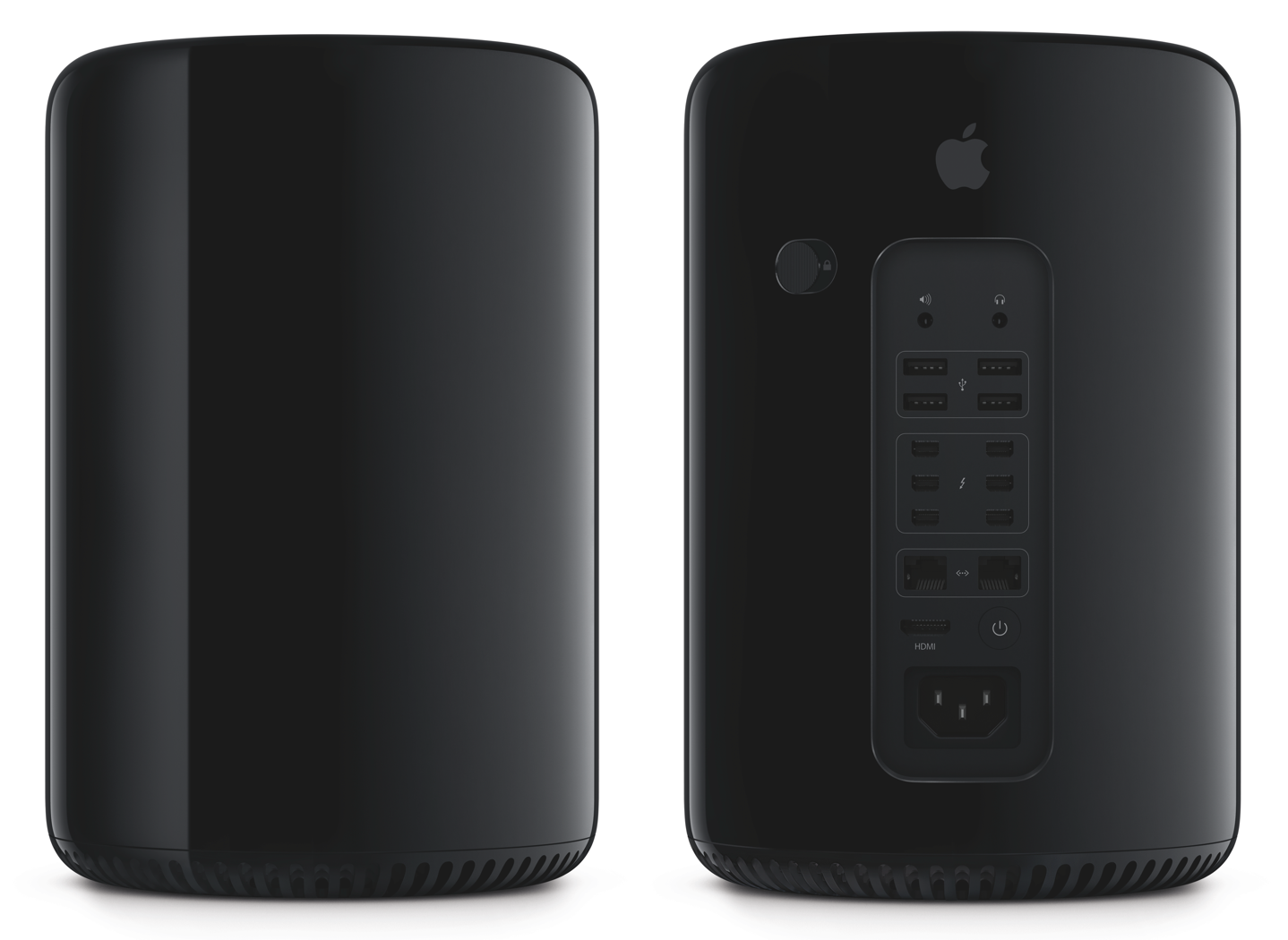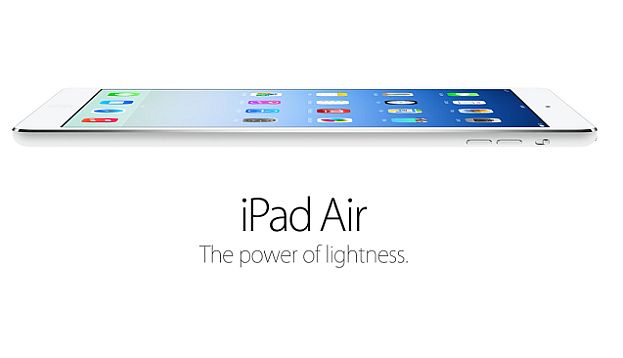The big Apple event yesterday contained a lot of news, and as usual Apple took the opportunity to update the state of the App Store. There are over one million apps that have been downloaded 60 billion times collectively, and developers have been paid over $13 billion. The iPad has now reached a cumulative total of 170 million units sold, which by comparison is more than twice the installed base of the Xbox 360 or the PS3.
Apple’s new products in a nutshell:
The new iPad Mini with 7.9″ 2048×1536 Retina display, A7 processor, M7 coprocessor, and a 5MP camera starting at $399 for the 16GB WiFi version (you can add LTE and memory up to 128 GB). The device is slightly heavier than before at 0.73 pounds, but the same dimensions, and still boasts a 10 hour battery life.
The new iPad Air has 9.7″ 2048×1536 Retina display, A7 processor, M7 coprocessor, and a 5MP camera starting at $499 for the 16GB WiFi version (you can add LTE and memory up to 128 GB). The iPad Air is remarkably smaller, thinner and lighter than the previous iPad. It’s only 6.6″ across, 0.29 inches thick and weighs only a pound, down from a 7.3″ width, a thickness of 0.34 inches and a weight of 1.33 pounds.

The MacBook Pro line was refreshed with Intel’s Haswell CPUs (offering greater power and longer battery life) and dropped their starting prices $200, at only $1299 for the 13 inch MacBook Pro and $1999 for the 15 inch MacBook Pro.
The reinvented Mac Pro workstations feature Intel Xeon E5 processors and AMD FirePro graphics in an astonishingly compact cylinder, with impressive expandability, at a starting price of $2999.
On the software side, Apple introduced its OS X Mavericks as a free update, and announced that the new versions of the iLife suite (iMovie, iPhoto, and Garage Band) and the iWorks suite (Pages, Numbers, and Keynote) for both iOS and Mac OS X will be free to new purchasers of Mac and iOS devices.
Apple’s product intros are timed for the holiday season, and will certainly have an impact on holiday hardware buys. The most important new devices are going to be very important to gamers: The iPad Mini with Retina display and the new iPad Air. Aside from all their other uses, these two new iPads are far and away the best tablets for gaming because of the 64-bit A7 chip. Apple didn’t reveal the clock speed or the amount of RAM, but if past practice is followed these A7 chips will be even more powerful than the one included in the iPhone 5s, which set new benchmarks for mobile devices.
The iPad Mini now has the highest resolution screen of any small tablet, and it’s in a very compact package. For $100 more you can get a larger 9.7†screen with the iPad Air, and it’s going to be the best big-screen tablet gaming rig you can find. Kudos, by the way, to Peter Warman of Newzoo for predicting the name of the new iPad a year ago, though he thought it would apply to the iPad Mini. Both of these devices will push the boundaries of what game developers can do with tablets by providing power equivalent to or exceeding an Xbox 360. We will see more impressive games by developers looking to make a strong visual impact on the market.
Perhaps the biggest surprise of Apple’s event was that there was no big surprise — most of the information had leaked out ahead of time or was easily guessed. Really, how many people were surprised that Apple introduced an iPad Mini with a Retina display Or, if you stop and think about what you’d logically expect in a new iPad given Apple’s track record, it would probably be slimmer, lighter, and faster than the current model. That’s exactly what Apple delivered.
What wasn’t announced at the Apple event is perhaps more interesting than what was announced. No iWatch, but then that was a long shot knowing how Apple likes to refine its vision before release. Surprisingly, there was no new Apple TV, and many observers at least expected a a refresh using the new A7 chip. Perhaps this signals that a more comprehensive Apple TV release will occur at some future point, with greater power under the hood, some key deals with content providers, and opening up the device to the full power of the App Store.

While the iPads generally met or exceeded expectations, one missing feature some expected was the new touch sensor that debuted on the iPhone 5s. That feature will probably wait for the next generation of iPads, but for a while people will be enjoying the lighter, thinner, faster iPad Air, or the iPad Mini with the Retina display. One important thing to note is that Apple priced the new iPad Mini with Retina display at $399, bumping it up from $329. It’s a reasonable upgrade given that Apple put in the new A7 chip, the M7 motion coprocessor, and upgraded the cameras as well. The iPad Mini with Retina now has all the same features as the iPad Air, but with a smaller form factor and a $100 lower price.
Once you get past the magical aura of Apple’s events, the competitive situation versus the new range of Android tablets is mostly unchanged. Apple’s upgraded the specs on the iPad, as Google and Amazon (and soon, every other manufacturer) has done for the Android tablets. Apple’s at the high end of the pricing, but the 64-bit A7 chip seems to have a strong performance edge over anything Android tablets can muster so far. The combination of strong new features (faster, thinner, lighter, better) should slow the market share erosion of Apple’s tablets. Remember, though, that Apple really doesn’t care about market share so much, preferring to maximize profits and maintain its brand position as the premium device maker. These new computers and tablets will certainly accomplish those goals.
One important new feature for Apple is adding the iLife and iWork software to all new iOS and OSX devices. This provides a strong added feature for both the casual and the work oriented tablet user. It’s aimed squarely at Microsoft’s Surface, and at laptops in general. If Apple can get you to compare the price of an iPad to a laptop, the iPad looks pretty reasonably priced. Another direct shot at Microsoft is making the OS X software Mavericks a free upgrade, when you consider that Microsoft has made billions from selling operating system upgrades. Microsoft’s revenue from OS sales has been in decline, and Apple’s move will probably hasten that.
The new MacBook Pro line will certainly do well, especially with the new lower price tag. Apple also introduced the new Mac Pro line, in an astonishingly small package crammed with power and capability starting at $2,999. It’s not a consumer product by any means, but professionals in audio, video and imagery will be putting this on their wish list. Video producers will love the idea of up to three 4K screens on one workstations, with the power to process video in record time. As an added bonus, the Mac Pro has a beautiful design that will look great sitting on a creative professional’s work station.
Overall, Apple has introduced a solid array of new products that will continue to drive sales for the company. Yet people are still waiting for Apple to strike out into new product categories, such as the long-rumored iWatch or the iTV/Apple TV product possibilities. We will probably see something in one of those areas at least in 2014. Until then, we’ll just have to aspire to an iPad Air as the latest in sexy Apple hardware.

